#Paradigm Process
Explore tagged Tumblr posts
Text
The Healing POWER of LOVE
In order for us to actually find love, a part of us must die. A part of us needs to die because it's not love; usually instead, it's something based in fear, says Mark L Lockwood who designed his 10 step healing course with the very first step being centr
An Introduction to Love vs Personality The modern world of psychiatry widely acknowledges the importance of self-love for healing the disordered persona, especially in the aftermath of a global mental health crisis. This concept is supported by abundant research in psychology, coaching, religion, spirituality, and medicine. It seems that understanding the true essence of love might have eluded…
#abundance#Compassionate inquiry#disordered personality#healing#inner journey#loving yourself#Paradigm Process#Power of love#return to love#rewire your brain#self care#self love#spiritual solution#transformation
3 notes
·
View notes
Text
right now I kinda feel like I've just gone through an entire season of character development in the span of like a week. I'm very tired, physically and emotionally (I also just cleaned my whole bathroom at 1am, because sometimes when you're already on a streak of dealing with difficult/unpleasant/tiring stuff it's easiest to just keep knocking out more of those things while you've at least got that momentum) but at the same time I feel weirdly powerful and fulfilled as a person right now. the sigh-and-flop-onto-the couch-with-my-phone I just did felt a lot more earned than it has in a while
#buny text#a lot of this has to do with the uhhh autism thing i mentioned here briefly a week ago#i posted a bunch more about it on bsky today and considered copying it over to here but then i didn't#it felt redundant to repeat after having a couple convos with friends about it and working through it further#I'm just having a lot of paradigm shifts re: myself and my life back to back lately. some good some bad. just a lot overall#but thankfully after my big dumb vent post last week some friends reached out and encouraged me to take a proper break and i'm doing that#it's amazing what even a few days of breathing room from work can do for your ability to process shit even when you're still very stressed
34 notes
·
View notes
Note
Also Paradigms! I would like to give my cursed car to... I don't know, Elros, and go take Celebrimbor's place for a bit
Oh. He supposes – he wouldn’t just give in to a mysterious captor just because even if he won the fight he still couldn’t get out, but the captive elf-husband of Annatar's fantasy probably would. Agency isn’t really one of the qualities Annatar’s “treasure” should have. “Right,” he says weakly, and ducks his head, trying to figure out how he wants to play this. “Sorry.”
#gem writes#silvergifting#aran morinorea#annatars shit paradigms#elros would have a blast with a cursed car#he would tame it#he would have an Adventure about it and lift the curse#and probably encounter and defeat a world-ending threat unrelated to the car in the process#due to who he is as a character#do you wanna be in celebrimbor's place *here*? ...tbh i dont blame you#i love a 'will give you anything at all you ask for except freedom' kind of love interest#im sure this will shock everyone#also i did do some homework and then had a food#and now i am going to do More Tasks. due to my powers.
5 notes
·
View notes
Text
.
#ooc#sorry i need a few minutes i need to emotionally process there already being a yiffy in homestuck.#i am experiencing a paradigm shift.
8 notes
·
View notes
Text
Okay why does this make so much sense???
I was diagnosed with autism when I was three years old and enrolled in an intensive ABA program, which attempted to use operant conditioning to train me out of acting autistic. One of the things that always confused me, reading over the ABA practitioner's notes decades later, is just how sweeping the category of "autistic problem behaviors" they were trying to extinguish in me was.
For instance, one such “autistic problem behavior” was my "reluctance to attend to non-preferred activities". When I was asked to do something I didn’t want to do, sometimes I would say 'no' or even cry before relenting and doing what I was told. Which is indeed uniquely disordered behavior, because neurotypical toddlers are famously obsequious angels who relish being ordered to do things they hate! (/sarcasm)
In all seriousness though, it's alarming that perfectly standard toddler stubbornness was something the ABA therapists felt they needed to condition out of me. It wasn't enough I learn to be indistinguishable from my non-autistic peers (which is already a messed up goal in its own right), the standard of “neurotypicality” I was told to aspire to seemed nothing short of being a perfectly obedient automaton.
None of this made sense back when I thought neurotypicality was about normalcy. But it does now that I realize neurotypicality is, and always was, about control
it does more harm than good to prop up the myth of the ‘neurotypical’ who completes tasks cheerfully with no issues. this person is a capitalist fantasy. the more you define yourself in comparison to this myth the more you justify social structures staying the same with minor accommodations to the ‘exceptions’ and the continued pathologizing of discomfort under hostile conditions
#I've always felt diagnostic labels needlessly pathologized harmless differences. Now I realize they also pathologize harmless similarities#I almost feel jealous of my three year old cousin who gets to be a little defiant#She GETS to throw a fit over Mikey Mouse Clubhouse getting turned off or not wanting to eat her carrots#Not in the sense that her parents let her get away with it. There are proportional consequences like taking away TV time or dessert#But they do so with the understanding that this kind of thing is to be expected of a toddler#meanwhile when I was her age the same behavior was a sign there was something wrong with me#To be clear I don't think diagnostic labels are inherently a bad thing#I do have pronounced differences in how my brain processes information that make it difficult for me to navigate the world#And 'autism' has given me a really useful paradigm for understanding and accommodating those differences#But I think we have to be very careful about the standard of neurotypicality we define various neurodivergencies in opposition to#And ask ourselves that if neurotypicality is the collection of traits that make it easiest to move through society#and those traits are at once unattainable and extremely exploitable. Then maybe the problem is society rewarding those traits#rather than people failing to achieve them#ABA cw#actually autistic
49K notes
·
View notes
Text
It makes me sad that we still don't have any real successors to languages like Csound or Supercollider
#csound is honestly still decent in many aspects. But its syntax is in dire need of a face lift#Supercollider has cool aspects at its core but#its development has been such a god damn mess that the best option is to nuke it from orbit and start over.#there's chuck. But chuck just feels like a text based version of Pure Data's signal processing library#it doesn't leverage the advantages of a text-based interface well enough.#although one advantage it has over CS and SC is that it's not completely tied down the Unit Generator paradigm of synthesis#Which is kind of outdated in some ways
1 note
·
View note
Text
linguistics is fun cause i can talk about "bleeding duke of york gambits" and everyone will immediately get one image in their heads that has nothing to do with what the phrase actually means
0 notes
Text
Yeah, nah...
Daily writing promptHow often do you say “no” to things that would interfere with your goals?View all responses Yeah, nah. A lot more now that I’m older and diagnosed. Interfere with my goals, or something I don’t feel inclined to because CBF putting that much energy into masking, to toe the social line to the meta-narrative’s requirements. I’m reading between the lines here from my own…

View On WordPress
#actually autistic#Australia#boundaries#changing paradigm#changing programs#dailyprompt#dailyprompt-1888#enabling#feel good#fight flight fawn#goal setting#goals#good on you#good vibes#growth mindset#healthy living#life on the spectrum#manifestation#masking#mastering the vibe#the process#wholesome#women speak
0 notes
Text
What if I don't want to wait until new years to make new goals or start working on things?
#I'm in the process of a paradigm shift#and half the time I'm looking forward to the change#but half the time I'm scared and terrified and don't want it#I'm feeling ok about it right now#and kind of want to be able to do things *now*#even if it's not actually feasible for some of them#they tell me this is reality
0 notes
Text
youtube
In the first episode of our brand new podcast series, "The Next Paradigm of Outsourcing," we welcomed Dr. Martin Fahy to share his insights on the Australian BPM landscape. During the discussion, Dr. Fahy spoke about the change in mindset brought about in the BPM landscape in Australia due to COVID and its aftermath. Dr. Martin highlighted the need for organizations to rethink the service models and consider the scope and importance of automating industry processes to gain optimum efficiency.
#business expansion#regulatory compliance#accounting outsourcing consultant#tax advisory#business consulting#business set-up#transaction advisory#finance and accounting outsourcing#corporate services#transfer pricing#management assurance#business process management#Next Paradigm of Outsourcing#Youtube
0 notes
Text
Event-Driven Design Demystified: Concepts and Examples
🚀 Discover how this cutting-edge architecture transforms software systems with real-world examples. From e-commerce efficiency to smart home automation, learn how to create responsive and scalable applications #EventDrivenDesign #SoftwareArchitecture
In the world of software architecture, event-driven design has emerged as a powerful paradigm that allows systems to react and respond to events in a flexible and efficient manner. Whether you’re building applications, microservices, or even IoT devices, understanding event-driven design can lead to more scalable, responsive, and adaptable systems. In this article, we’ll delve into the core…
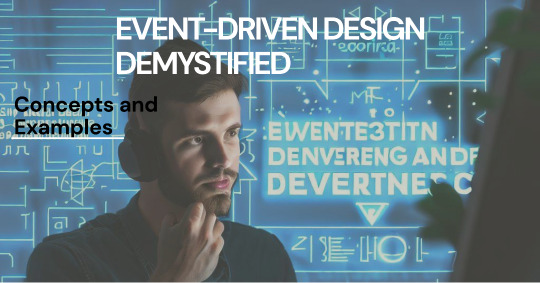
View On WordPress
#Asynchronous Communication#Decoupling Components#E-commerce Order Processing#Event Broker Paradigm#Event Sources and Consumers#Event-driven architecture#Event-Driven Examples#Event-Driven Paradigm#Event-Triggered Workflows#Microservices and Events#Middleware in Event-Driven Design#Modular Development#Reactive Systems#Real-Time Responsiveness#Scalable Software Systems#Smart Home Automation#Social Media Notifications#Software Design Patterns#System Event Handling#User Experience Enhancement
1 note
·
View note
Text
Invasive Species and Xenophobia
Invasive species are complicated! People have a lot of feelings about them, positive and negative. Are plants that move "invaders" "colonizing", "immigrants", "citizens"? What does it mean to kill species that are from somewhere else? What if that species legitimately makes a poor neighbor and causes extinctions in other, native species? This complex, culturally-loaded issue is a foundational issue behind a lot of plant conservation and restoration.
This is a juicy and still actively disputed topic! The Guardian recently had a big article on colonialism in Botany, (tbh her views are dated and reductive, imo) and it’s come up again this week, to much hostility (cw: reddit). Yes, my region's native plant restoration came from literal nazis, but also, the impacts of some invasive species are real, not figments of a racist imagination. How do we balance these issues? What does ethical invasive management look like?
Since it’s such a juicy topic, I wanted to offer a few fun readings to share:
The Native Plant Enthusiasm: Ecological Panacea or Xenophobia?, Gert Gröning and Joachim Wolschke-Bulmahn, 2004, Arnoldia.
THE CLASSIC 20th century German nazis and native plants paper. Made a huge splash when it came out, and you will still encounter people who paint all native plant stuff with this brush. Summary: yeah the nazis loved their native plants and used them as part of their conquering process. Also, the first prairie plantings ever, located in Chicago, were done by a racist probable-nazi for racist reasons, full stop. I’ll let him speak for himself: “The gardens that I created myself shall�� be in harmony with their landscape environment and the racial characteristics of its inhabitants. They shall express the spirit of America and therefore shall be free of foreign character as far as possible… the Latin and the Oriental crept and creeps more and more over our land, coming from the South, which is settled by Latin people, and also from other centers of mixed masses of immigrants. The Germanic character of our race, of our cities and settlements was overgrown by foreign character. The Latin spirit has spoiled a lot and still spoils things every day.” - Jens Jensen
Botanical decolonization: rethinking native plants, Tomaz Mastnak, 2014, Environment and Planning D: Society and Space
Rather than viewing native plant plantings as an act of racially-pure occupation, Mastnak positions native plants in California as a decolonization of the sub/urban lawn. Uses a lot of quotations from 16th century English philosopher Francis Bacon, and is heavy on the philosophical musings.
From killing lists to healthy country: Aboriginal approaches to weed control in the Kimberley, Western Australia by Bach et al., 2019, Journal of Environmental Management.
This paper talks through some of the native vs invasive debate, and offers a different perspective on how to approach to plant invasive management based on cultural relations, rather than country of origin or behavior.
Beyond ‘Native V. Alien’: Critiques of the Native/alien Paradigm in the Anthropocene, and Their Implications, Charles R. Warren, 2021, Ethics, Policy, & Environment
DENSE but thorough, if you want to follow the entire history of the native/invasive debate, this has you covered. The most interesting stuff, in my opinion, is the discussion of invasive denialism, IE: the impasse of “You’re just being racist!” Vs “You know nothing about ecology!” I recommend the Discussion, which starts on page 13.
#invasive species#native plants#ecology#history#i had to put a reading list together for lab this week#so you get to reap the benefits#the children yearn for the mines#except its me#the research scientist yearns for the syllabi mines
644 notes
·
View notes
Text
#process excellence model#operational excellence vs process excellence#what is process excellence#business process excellence#digital process excellence#paradigm of excellence#Process Mining & Process Discovery
0 notes
Text
someone: do you think anders is a good person
the part of my brain that engages in genuine critical media analysis: i think it's disingenuous to label him through the lens of a binary good/evil paradigm because what makes him such an interesting and engaging character is his status inbetween a human with complex emotions and desires and flaws that will never fully align with each other, and the singleminded focus and purpose of a supernatural entity that is literally justice incarnate and has no capacity for nuance and whose very nature is fundamentally incompatible with humanity but the two of them are so deeply connected that they make up a single identity that's constantly at odds with itself and this struggle causes him to act in ways that aren't always clean and often land him and those around him in impossible positions. i think he was morally justified in doing what he did to the chantry but i also believe he understood the magnitude of what he was doing which is why i inherently disagree with the notion that characters like varric or sebastian were wrong in their reactions because that's the very nature of violent revolution—people get caught in the crossfire and are harmed despite their innocence and regardless of the righteousness of the action at large. if someone killed your mom to protect a hundred orphans you probably wouldn't come out of the experience full of love and admiration for the person who killed your mother because regardless of the outcome they still fucking killed your mother. anders destroyed people's homes and lives and there's a conversation to be had about how he gaslit and exploited hawke, his own potential lover, into being an unwitting accomplice even though we know through meta knowledge that he was perfectly capable of doing it on his own and very likely only wanted hawke's involvement because he needed a powerful figure to become the rallying symbol for his cause. the reality is his very nature would have never allowed him to choose hawke and his friends over his goal because to do so would have been fundamentally selfish and antithetical to his newfound identity as one who champions the needs of the many at the expense of the individual. it's a beautifully tragic story about the lengths a person would have to go to in order to enact any sort of meaningful change while constrained in a system that benefits from their powerlessness, and how that process cannot exist without suffering and pain on both the individual and collective level. i also feel like if anders was written by a person with a degree of compassion and awareness for not only the character they were writing but just what living as a vulnerable and targeted minority is like then the narrative and message would have been vastly different than what ended up on screen because, ultimately, the game wants you to look at the stark injustice of a child being ripped away from their family to spend a life locked away in cold isolation where they're at constant risk of exploitation, abuse, death, and even a complete removal of their personhood, and think that there's room for compromise. it's a narrative that perpetuates the myth that passivity and tolerance in the face of oppression is more virtuous than burdening the masses with the discomfort of seeing their own culpability in sustaining it. a better game would have challenged varric and sebastian while also affirming their anger instead of just the latter. a better game would have explored hawke's reaction in a deeper manner that examined their relationship with the system, their own internal biases, and how anders affected their worldview.
the part of my brain that was on tumblr in 2014 and is still extremely petty and spiteful: he should have blown up the conclave while he was at it
625 notes
·
View notes
Text
AMAZING article about what it means to participate in anti-Zionism work both online and in person.
If your anti-zionism does not in any way acknowledge that it is a way of thought and practice led by and for Palestinians, then you need to reevaluate your "anti-zionism" label.
Some passages that felt especially relevant to tumblr:
If we accept, as those with even the most rudimentary understanding of history do, that zionism is an ongoing process of settler-colonialism, then the undoing of zionism requires anti-zionism, which should be understood as a process of decolonisation. Anti-zionism as a decolonial ideology then becomes rightly situated as an indigenous liberation movement. The resulting implication is two-fold. First, decolonial organising requires that we extract ourselves from the limitations of existing structures of power and knowledge and imagine a new, just world. Second, this understanding clarifies that the caretakers of anti-zionist thought are indigenous communities resisting colonial erasure, and it is from this analysis that the strategies, modes, and goals of decolonial praxis should flow. In simpler terms: Palestinians committed to decolonisation, not Western-based NGOs, are the primary authors of anti-zionist thought. We write this as a Palestinian and a Palestinian-American who live and work in Palestine, and have seen the impact of so-called ‘Western values’ and how the centring of the ‘human rights’ paradigm disrupts real decolonial efforts in Palestine and abroad. This is carried out in favour of maintaining the status quo and gaining proximity to power, using our slogans emptied of Palestinian historical analysis.
Anti-zionist organising is not a new notion, but until now the use of the term in organising circles has been mired with misunderstandings, vague definitions, or minimised outright. Some have incorrectly described anti-zionism as amounting to activities or thought limited to critiques of the present Israeli government – this is a dangerous misrepresentation. Understanding anti-zionism as decolonisation requires the articulation of a political movement with material, articulated goals: the restitution of ancestral territories and upholding the inviolable principle of indigenous repatriation and through the right of return, coupled with the deconstruction of zionist structures and the reconstitution of governing frameworks that are conceived, directed, and implemented by Palestinians. Anti-zionism illuminates the necessity to return power to the indigenous community and the need for frameworks of justice and accountability for the settler communities that have waged a bloody, unrelenting hundred-year war on the people of Palestine. It means that anti-zionism is much more than a slogan.
[...]
While our collective imaginations have not fully articulated what a liberated and decolonised Palestine looks like, the rough contours have been laid out repeatedly. Ask any Palestinian refugee displaced from Haifa, the lands of Sheikh Muwannis, or Deir Yassin – they will tell that a decolonised Palestine is, at a minimum, the right of Palestinians’ return to an autonomous political unit from the river to the sea. When self-proclaimed ‘anti-zionists’ use rhetoric like ‘Israel-Palestine’ – or worse, ‘Palestine-Israel’ – we wonder: where do you think ‘Israel’ exists? On which land does it lay, if not Palestine? This is nothing more than an attempt to legitimise a colonial state; the name you are looking for is Palestine – no hyphen required. At a minimum, anti-zionist formations should cut out language that forces upon Palestinians and non-Palestinian allies the violence of colonial theft.
[...]
The common choice to centre the Oslo Accords, international humanitarian law, and the human rights paradigm over socio-historical Palestinian realities not only limits our analysis and political interventions; it restricts our imagination of what kind of future Palestinians deserve, sidelining questions of decolonization to convince us that it is the new, bad settlers in the West Bank who are the source of violence. Legitimate settlers, who reside within the bounds of Palestinian geographies stolen in 1948 like Tel Aviv and West Jerusalem, are different within this narrative. Like Breaking the Silence, they can be enlightened by learning the error of colonial violence carried out in service of the bad settlers. They can supposedly even be our solidarity partners – all without having to sacrifice a crumb of colonial privilege or denounce pre-1967 zionist violence in any of its cruel manifestations. As a result of this course of thought, solidarity organisations often showcase particular Israelis – those who renounce state violence in service of the bad settlers and their ongoing colonisation of the West Bank – in roles as professionals and peacemakers, positioning them on an equal intellectual, moral, or class footing with Palestinians. There is no recognition of the inherent imbalance of power between these Israelis and the Palestinians they purport to be in solidarity with – stripping away their settler status. The settler is taken out of the historical-political context which afforded them privileged status on stolen land, and is given the power to delineate the Palestinian experience. This is part of the historical occlusion of the zionist narrative, overlooking the context of settler-colonialism to read the settler as an individual, and omitting their class status as a settler.
It is essential to note that Palestinians have never rejected Jewish indigeneity in Palestine. However, the liberation movement has differentiated between zionist settlers and Jewish natives. Palestinians have established a clear and rational framework for this distinction, like in the Thawabet, the National Charter of Palestine from 1968. Article 6 states, ‘The Jews who had normally resided in Palestine until the beginning of the Zionist invasion will be considered Palestinians.’ When individuals misread ‘decolonisation’ as ‘the mass killing or expulsion of Jews,’ it is often a reflection of their own entanglement in colonialism or a result of zionist propaganda. Perpetuating this rhetoric is a deliberate misinterpretation of Palestinian thought, which has maintained this position over a century of indigenous organising. Even after 100 years of enduring ethnic cleansing, whole communities bombed and entire family lines erased, Palestinians have never, as a collective, called for the mass killing of Jews or Israelis. Anti-zionism cannot shy away from employing the historical-political definitions of ‘settler’ and ‘indigenous’ in their discourse to confront ahistorical readings of Palestinian decolonial thought and zionist propaganda.
[...]
In the context of the United States, the most threatening zionist institutions are the entrenched political parties which function to maintain the status quo of the American empire, not Hillel groups on university campuses or even Christian zionist churches. While the Anti-Defamation League (ADL) and the American Israel Public Affairs Committee (AIPAC) engage in forms of violence that suppress Palestinian liberation and must not be minimised, it is crucial to recognise that the most consequential institutions in the context of settler-colonialism are not exclusively Jewish in their orientation or representation: the Republican and Democratic Party in the United States do arguably more to manufacture public consent for the slaughtering of Palestinians than the ADL and AIPAC combined. Even the Progressive Caucus and the majority of ‘The Squad’ are guilty of this.
Leila Shomali and Lara Kilani
2K notes
·
View notes
Text
Nodal Dominant Themes — 𝐍𝐚𝐤𝐬𝐡𝐚𝐭𝐫𝐚 𝐎𝐛𝐬𝐞𝐫𝐯𝐚𝐭𝐢𝐨𝐧 𝐒𝐞𝐫𝐢𝐞𝐬 (part 1) 𝐨𝐟 𝐩𝐚𝐫𝐭 𝟓
Ardra, Swati, Shatabhisha embody Rahu qualities to the fullest. Breaking boundaries, whether they mean to or not, refining or rebuilding themselves by the way they absorb Maya (illusion), being thrown into foreign lands to create, explore and challenge existing paradigms. The ultimate mastery of Rahu nakshatras lies in recognizing that Maya is not the goal, but the process of refinement. This is shown in the natives' urge to learn, apply and cultivate something for themselves. This means that their initial stages have a lot of lack, and that's where that hunger to achieve and receive comes from. They'll take on challenges if it means there's an opportunity to fulfill themselves. In these following examples, the Rahuvian character is often given an opportunity to enter higher societies, usually through a job, a scholarship or from meeting the right person in the right time.
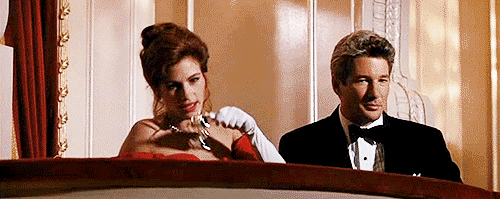
Swati Sun Julia Roberts, in Pretty Woman, plays a poor, sex worker who enters the high society through a billionaire and becomes 'refined'. Despite her glow up, her authenticity still contrasts with the pretentiousness of the high class social circle she finds herself in, challenging their perceptions of worth and class.
Much like Pretty Woman, in the film My Fair Lady, the Rahuvian meets a snobbish phonetics professor who wages that he can make her presentable in high society.


In the film Khoobsurat, Shatabhisha Moon Sonam Kapoor Ahuja plays a quirky physiotherapist who is ill-mannered and boundless. She is given a once-in-a-lifetime opportunity to work for a royal family. There, she meets a handsome young Rajput prince who is her complete opposite (given that he is portrayed by a Mula Moon native, Fawad Khan, who adheres to the customs of his background, bound by his roots).

Despite their different social classes, the royal family learns a lot from her authenticity.
This theme of outer duality in which the native crosses over to a whole new world different from where they originally came from centers a lot around the 'poor vs rich' dynamic in these modern examples — exploring classism, elitism and other societal divisions which make outsiders.

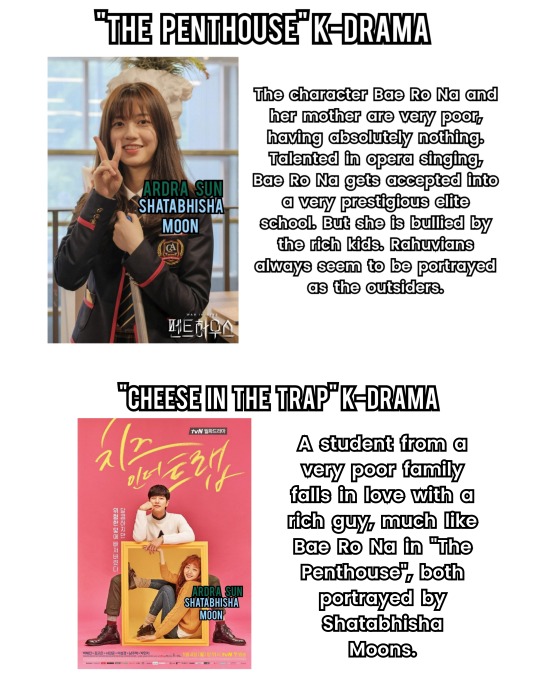
As I briefly gave examples in this post, Shatabhisha can be linked to Cinderella. Which means that trine nakshatras can also inherit this theme of person from poor background falls in love with person from wealthy background. As shown in that post, the union is often with a Mula native. It was expected to find these Rahu-Ketu connections, as the nodes are always one with each other. Their themes can overlap, which I'll be going more into further down this post.
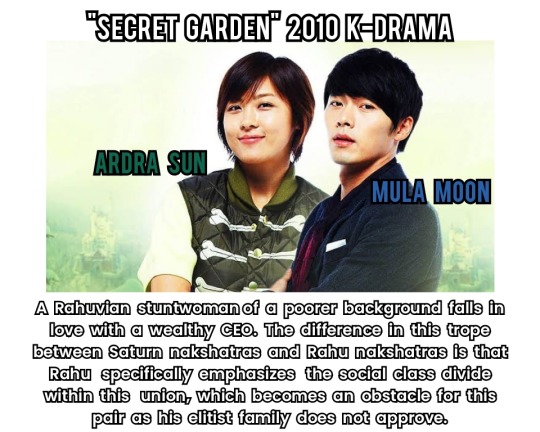
The Mula CEO also comes from old money.
Rahu thrives on venturing the unknown and embracing the unconventional, often shown in the trope of one falling in love with someone alien.
This otherworldly love is seen in Pirates of the Caribbean: On Stranger Tides, where a Rahuvian sailor falls in love with the mermaid, Syrena. Mermaids are captured and exploited by humans — immediately we see this theme of division. And unlike the other humans, he treats Syrena with respect and equality.

Syrena is portrayed by Mula Moon Astrid Berges-Frisbey, while the sailor is portrayed by Ardra Sun Sam Claflin. In the end, Philip becomes a merman and lives with Syrena underwater. This transformation that the Rahuvian goes through in order to unite with a lover of another species is also seen in the film Lisa Frankenstein, starring Shatabhisha Moon Kathryn Newton — although it's more in a Romeo-&-Juliet style.

The Rahuvian character, Lisa, falls in love with Creature, who is a living corpse portrayed by Magha ASC Cole Sprouse. Lisa kills herself in a tanning bed to join the Creature in death. Their union shows her alive, but mummified.
This theme of one overcoming the obstacle between them and the person they desire is seen yet again in the film Casper (1995). A girl, played by Magha ASC Christina Ricci, meets a ghost named Casper, who falls in love with her. Casper is voiced by Malachi Pearson who has potential Swati Moon. Casper's one wish is to be human again so that he can win her heart.
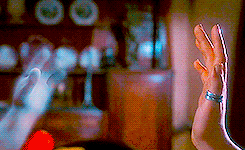
His wish is fulfilled but he can only be human up until midnight. His human form is portrayed by Swati Moon Devon Sawa.
In the Korean drama, Are You Human?, Shatabhisha Sun Gong Seung-yeon plays a bodyguard who is given an opportunity to protect an advanced humanoid whom she falls in love with. Another abnormal, interspecies relationship.
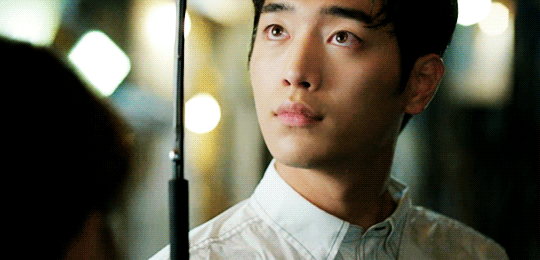
The humanoid is the clone of an heir of a rich conglomerate. The heir is portrayed by Magha Moon native Seo Kang-joon – him being born into wealth contrasts with her being brought up from a poorer background; we see this theme again of a cross over between two opposite worlds as she gets romantically entangled with him.
A lot of these pairings show Rahu's need to break taboos and seek authenticity over conformity, as these unions tend to be abnormal in a discriminatory society. As illusory as Rahu is by nature, it highlights the illusions within society and the challenges that come with it.

Rahu seeks to challenge conventions, forcing individuals to confront their biases, embrace diversity, and explore love in its most expansive ways; while Ketu can be detached from society in general, already transcending or dissociating from it altogether.
Now extending the old money archetype into this, we can see Rahuvians embodying this shabby, nonconforming, rough-around-the-edges, transformative archetype who'll be on the opposite end. As Ketu symbolizes the past, ancestral roots, tradition, the old way of doing things; Rahu symbolizes the future, foreignness, pursuit, a new way of doing things.
Old money often means adhering to strict family rituals, customs, and expectations. There's an expectation for the wealthy to marry their own, maintaining a cultural practice that has existed for centuries, a theme of Ketu as it means to preserve the past. But Rahu comes in as a disruptor, changing rules that seemed absolute, causing more confusion and tension. Rahu often seeks unity, even with our all differences.

Rahu and Ketu are always 180 degrees apart in a chart. This gives an understanding to how they're always on opposite sides of the same coin. So their union in these media examples often come with resistance and chaos.
The story of Romeo and Juliet is about a star-crossed love stuck in this push-&-pull between tradition and breaking free from tradition.

Rahu is symbolized as the head of a dragon, while Ketu is the tail. Together they remain in this endless chase, their nature defined by longing and separation. Maria and Tony from A West Side Story mirrors this nodal dynamic, as it's based on the classic Romeo and Juliet. Just as the nodes themselves are forever trapped in opposition and in an eternal chase, these lovers remain trapped by their differences. Their love and lives are destined to be cut short, signifying the impossible union between the opposing nodes in these forbidden love stories.

The tragic ending of Maria and Tony’s story reflects the inevitable nature of the nodes. In both Romeo and Juliet and A West Side Story, we see the power of love transcending societal barriers, yet this love is doomed by the very forces it seeks to overcome.


Ashwini nakshatra literally has the strongest ties in Romeo & Juliet (list).
Another pair of this nodal influence (Ketu-Ketu), with this exact theme, is Mavis and Johnny from the animation Hotel Transylvania. Mavis is voiced by Ashwini Moon Selena Gomez, and Johnny is voiced by Magha Sun Andy Samberg. Mavis is a vampire and Johnny is a human. Their worlds should never have had a crossover to begin with. But Johnny, being Magha, feels a sense of belonging with these monsters and Mavis instead of fearing them (a nod to the Mula archetype and Beauty-&-the-Beast trope, which, as I've stated before, can also manifest itself as Ketu-Ketu instead of Ketu-Jupiter... much like Belle and Rumpelstiltskin from Once Upon A Time, Belle being played by Mula Sun Emilie de Ravin and Rumpelstiltskin portrayed by Ashwini Sun Robert Carlyle — the show's own Beauty & the Beast).
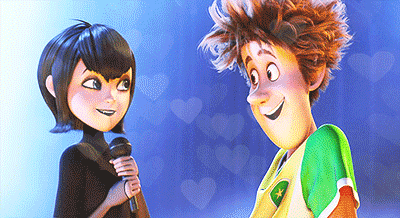
Though light-hearted and comedic, their union was forbidden as monsters and humans should be kept apart to their own worlds due to past conflicts. Mavis' father, Dracula, goes to great lengths to separate the two, but then he realizes that their love is genuine and overcomes his prejudices.

The theme of letting go touches on Ketu's tendency to sever ties, signifying the lesson of how temporary things are, including love. The film Untamed Heart is a great example, perfectly encapsulating this theme between two Ketu natives.

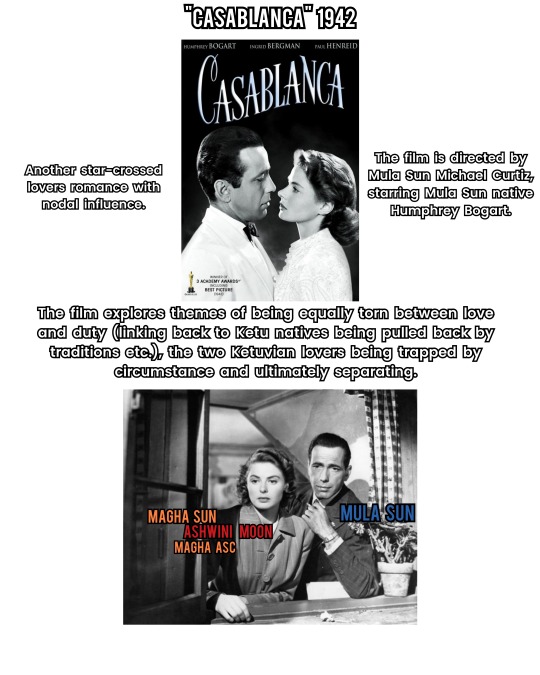
And as Mars also rules Ashwini nakshatra, this can be a major focus.
Connecting Orpheus to Ashwini, so much of this nakshatra's themes are highlighted in this Greek myth. Ketu is associated with nature, animal caretaking, and taming wild beasts. This is seen in Orpheus's ability to charm animals, move trees and rocks, and even change the course of rivers, through his music. Music has been known as a form of comfort and healing, and Orpheus' music is so powerful that it hypnotizes wild beasts, even influencing Hades, the ruler of the underworld.
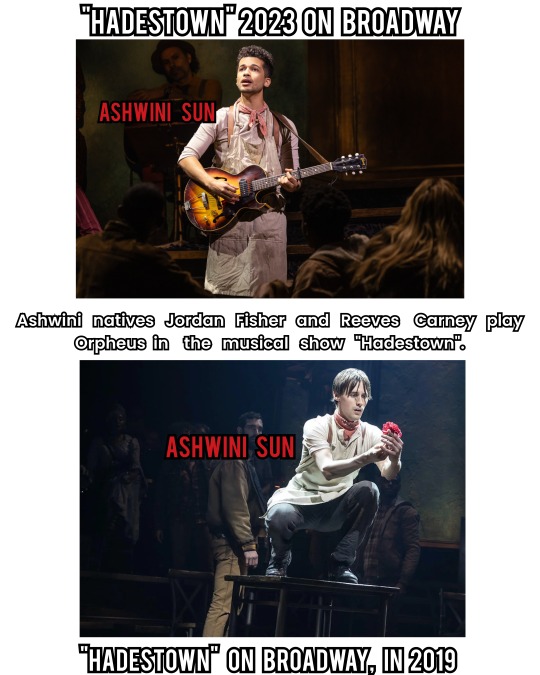
The mythological character loses the love of this life, Eurydice, and he is unable to accept her death. He becomes so desperate, filled with grief and fear, that he descends into the underworld to get Eurydice back. As Ashwini can be driven by selfishness, severance becomes a major lesson in their journey.
The musical film Black Orpheus (1959) is directed by Ashwini Sun, Magha ASC Marcel Camus, a black Brazilian retelling of the tale.
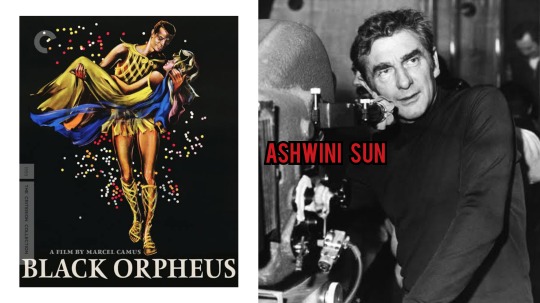
In Jason & the Argonauts (2000), Ashwini Moon Adrian Lester portrays Orpheus. In the animation Hell and Back, *Ashwini Moon Danny McBride voices Orpheus. In 1960s The Giants of Thessaly, Massimo Girotti portrays Orpheus and he has Moon in Magha (trine nakshatra to Ashwini). This obvious connection of Ashwini to Orpheus takes me back to the ruling deities, the Ashwini Kumaras. Ashwini can be related to partnership, soulmates, connected minds. Here, there's a theme of inseparability yet the nature of the nakshatra forces severance. Back to the tale — With just the charm of his music, Orpheus is able to convince Hades to bring Eurydice back to life, only under the condition that Orpheus never looks back at her when they leave the underworld. Overwhelmed with so much love, he's unable to help himself, as he fails and looks back at her as they neared the exit. This is how Orpheus loses Eurydice forever.
Similar to Orpheus, the Twelfth Doctor from Doctor Who spirals into madness and desperation after the death of his close companion, Clara Oswald. The Twelfth Doctor is played by Ashwini Sun native Peter Capaldi. His Aries relentlessness and selfishness has him breaking the laws of time to bring her back, just like Orpheus breaks the natural order of life to get Eurydice back.
Clara Oswald is interestingly nodal herself, being played by Ashwini native Jenna Coleman.
YouTube video link
His journey through grief and his refusal to let her go mirrors Orpheus's determination to challenge the natural order of life for love. In the end, Twelve's memories of Clara get wiped out when he is forced to sever ties with her. Clara remains dead and so does Eurydice. This makes these pairs star-crossed, as Ketu reminds us of the inevitability of loss and separation. With Mars there, it makes it an obvious theme with Ashwini nakshatra.

Orpheus tried to get Eurydice back after her death by seeking the realm of the dead as a mortal being. He finds the cave that led to Hades and slowly descended into the Underworld. He sang to Cerberus, a terrifying, three-headed monstrous watchdog, able to tame and charm the beast so that he enters. This theme of entering portals to other worlds and dimensions tends to be associated with Ketu, and I find it interesting that I am particularly seeing the magic within Ashwini nakshatra.


In the 2008 film Jumper, Ashwini Sun Hayden Christensen plays a young man who can teleport himself anywhere and everywhere due to a genetic anomaly. Regarding Doctor Who, the first female Doctor has indeed been played by an Ashwini native as well. And Ashwini Sun native Russell T Davies is the original showrunner & head writer of the 2005 revival of Doctor Who, starring Ashwini Sun David Tennant.
It is interesting that Ketu nakshatras also have this otherworldliness quality to them which is seen in having access to portals or dissociating into other realms. Although I have already explored this theme within the context of Anuradha nakshatra, there is still an undeniable nodal influence to it as I see these nakshatras frequently pop up in this genre of film.

Magha Sun Amy Adams' character in Enchanted falls into a well which is a portal to another world. In Alice in Wonderland (2010), Magha Moon and Swati Sun native Mia Wasikowska's character also falls into a portal to another world.

In the animation Caroline, Ashwini ASC and Shatabhisha Sun native Dakota Fanning voices a girl who finds a portal to another world. In 1953's Peter Pan, Ardra Sun Kathryn Beaumont voices Wendy who is taken to another magical world called Neverland by a boy named Peter Pan who's voiced by Shatabhisha Sun Bobby Driscoll. In 2003's Peter Pan live-action movie, Wendy is played by Ardra Moon Rachel Hurd-Wood, taken into this whole other reality of magic and wonder. In Hook (1991), adult Peter Pan is portrayed by Shatabhisha Moon and Swati ASC Robert Williams, the character a middle-aged lawyer from the modern world who returns to his magical origins. In the Korean drama Spice Up Our Love, Ashwini Moon Han Ji-hyun's character wakes up as the protagonist of the web novel she wrote. In the Korean drama W: Two Worlds Apart, Shatabhisha Sun Han Hyo-Joo gets sucked into a webtoon written by her father. There she falls in love with the protagonist who is played by Shatabhisha Moon Lee Jong-Suk, who gets gets sucked into her reality as well. In the Chinese drama Love Game in Eastern Fantasy, Mula Sun Esther Yu gets sucked into a video game novel as a supporting character. In The Wizard of Oz, Mula Moon and Ardra ASC Judy Garland plays a Kansas farm girl who is taken away in a tornado and ends up in the magical Land of Oz. In the series Emerald City, Ashwini Sun Adria Arjona is a Kansas nurse who is transported by a tornado to the Land of Oz. In the film Oz: The Great & Powerful, Ashwini Sun James Franco is a magician who is hurled away from Kansas into the wonderful land of Oz. In the 2013 animation Epic, Magha Moon Amanda Seyfried voices a young girl who finds herself transported into an alternate world and even falls in love with Ashwini Moon Josh Hutcherson's character (I highly recommend this film).
As Rahu is associated with illusions and exploring the foreign, we see this theme of escaping into simulations and dreamy worlds which one becomes absorbed in. This has been explored deeper within Swati nakshatra, which combines the arts and illusory tendencies of Rahu together.
The influence of the nodes often transcends the physical realm, embodying forces of spirituality, illusion and transformation together. But they both manifest differently in this theme. Rahu becomes absorbed in illusions (in form of the arts, simulations, imagination (ex. Peter Pan being the boy who is attached to Neverland because he never grows up — Neverland is an illusory place only found in the minds of children, this highlighting his attachment to illusions)); while Ketu tends to escape the material plane altogether, yearning transcendence and passing by realms to seek meaning and lessons.
In the film Meet Joe Black, Mula Sun Brad Pitt plays an otherworldly being who takes over the body of a man to experience Earth and be guided in the teachings & meaning of life. His very existence quite literally transcends time and space, which I relate to Ketu, as he is a mystery himself.

He is innately detached from human concerns like time, societal expectations, and permanence. But he falls in love with a human named Susan, who is also nodal-ruled, and his nature makes their connection doomed from the start. Susan is played by Mula Sun, Mula Moon native Claire Forlani. This making for another star-crossed pair because he can never fully participate in human life.
Going into the body-swapping trope, this calls to Rahu's desire to navigate a foreign perspective while Ketu seeks to transcend its rigid reality.
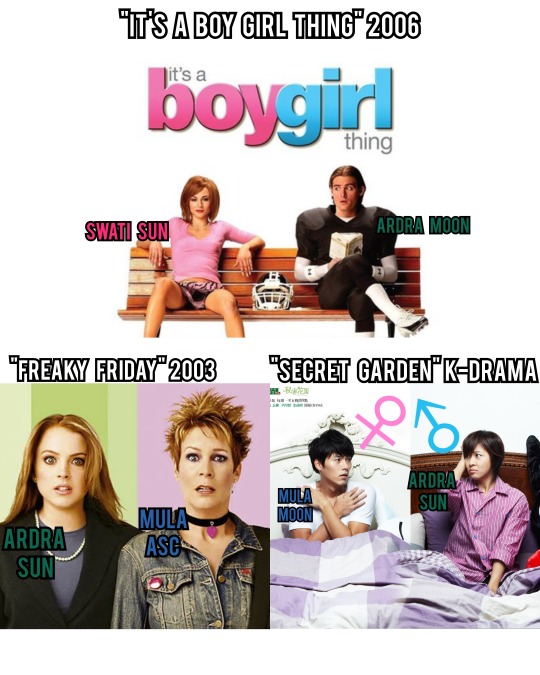
In the film Hot Chick (2002), Swati ASC Rachel McAdams plays a teenage girl who wakes up in the body of a 30-year-old male criminal played by Swati Sun and Ashwini Moon native Rob Schneider. In 1989's film Dream a Little Dream, an accident puts the consciousness of an elderly dream researcher played by Magha Moon Jason Robards into the body of a bratty teenager who is played by Mula Sun and Shatabhisha Moon native Corey Haim. Many more examples often include a Saturn nakshatra native as well, which I found very interesting. Hopefully I'll be circling back to that one day!
Rahu is thriving on the chaos of this trope since an entirely new identity is being explored (and lessons are learned as the social difference in one's gender, class, and even age tends to be highlighted for the ignorant one (Rahu essentially refining the native through this experience)).
The interaction of the nodes drive each other to a deeper understanding of life's illusions as it signifies letting go and refining oneself. In this little exploration, I got to understand that Ashwini is a romantic nakshatra which deals with loss and forced detachment due to Ketu. While Rahu nakshatras tend to be more romantic and igniting conflict in their pursuit of a love that's not right according to societal standards. This solidifies the image of the eternal chase of the dragon representing desire and detachment.
#ketu#rahu#nodes#mula#shatabhisha#magha#ardra#ashwini#swati#sagitarrius#gemini#libra#leo#aries#aquarius#vedic astrology#vedic observations#sidereal astrology#sidereal observations#astrology#astro notes#astro observations#nakshatra series
453 notes
·
View notes